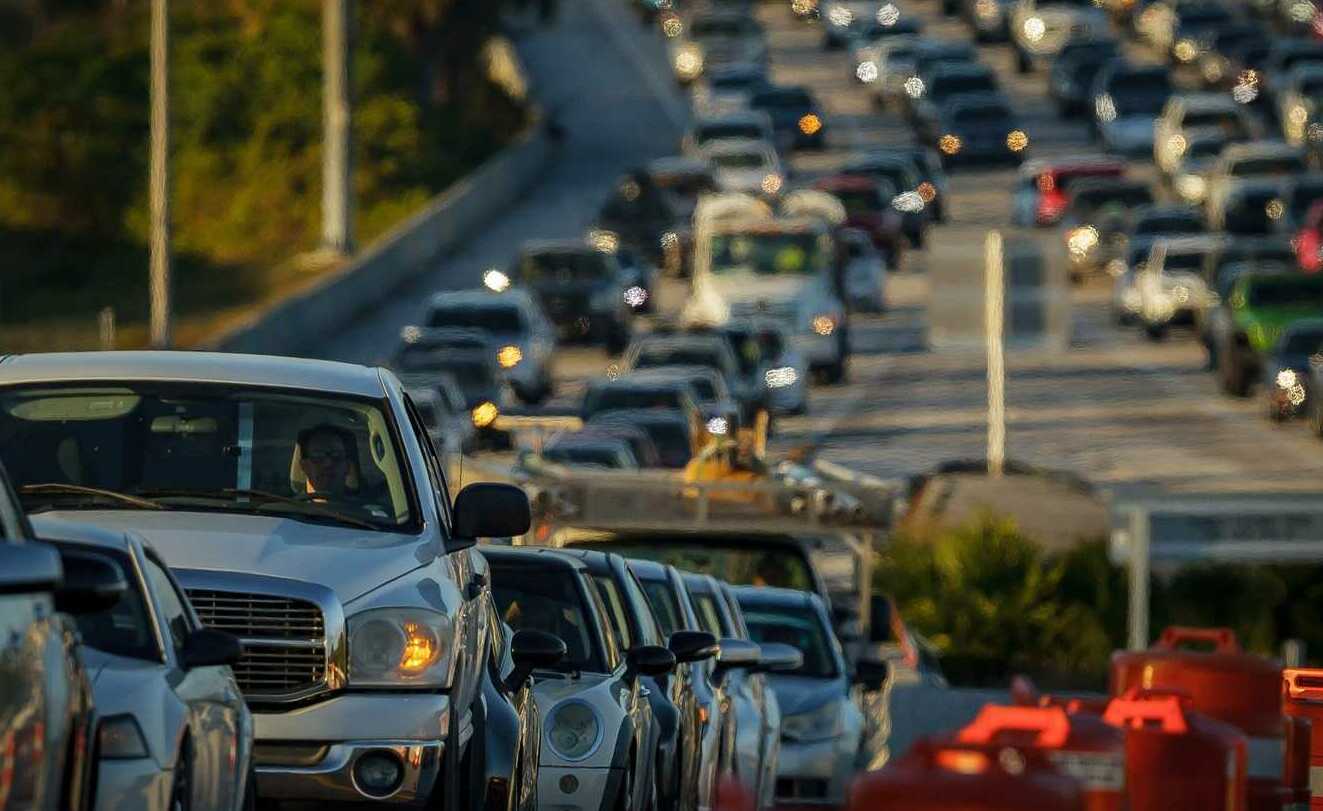by Bailey Schultz, USA Today
Millions of Americans are ready to hit the road again this Memorial Day weekend, which means trips in several regions could be twice as long as usual.
Road traffic during the upcoming Memorial Day holiday weekend is expected to eclipse what travelers experienced last year, now that Americans are feeling more confident about traveling with U.S. COVID-19 cases dwindling and COVID-19 vaccinations widely available.
AAA reported earlier this month that more than 37 million people are expected to travel 50 miles or more from home between Thursday and Monday – a 60% jump compared to last year, but still 6 million people fewer than the pre-pandemic Memorial Day weekend in 2019.
So how can travelers make sure they're hitting the road at the best time for Memorial Day trips?
Memorial Day Weekend: busy evening commutes
INRIX, a global mobility analytics company, expects the longest travel delays will occur in the late afternoons and early evenings leading up to the holiday weekend, especially between 2 and 6:30 p.m. on Thursday and Friday.
INRIX transportation analyst Bob Pishue suggests drivers plan alternate routes and commute during the mornings for the holiday weekend, now that afternoon congestion is nearly back to pre-pandemic levels.
"We expect the bulk of the travel to be in that late afternoon, early evening time period where you do have holiday travelers mixing with that afternoon commute traffic," he said.
Pishue said travelers should anticipate delays to start Wednesday and continue through Memorial Day. Roads should be less congested for return trips on Monday since many Americans have the day off and travelers will be sharing the road with fewer people commuting to and from work.
Travel on the Rebound
Travel times during the holiday are expected to be about 20% higher than usual across the country, Pishue said. Travelers who hit the road at the wrong time in major metropolitans like Atlanta, Houston and New York could see travel times triple on busy corridors compared to a normal trip.
Paula Twidale, senior vice president of AAA Travel, said in a statement earlier this month that pent-up demand is driving the increase in Memorial Day travel, which is considered “a strong indicator for summer.”
“As more people get the COVID-19 vaccine and consumer confidence grows, Americans are demonstrating a strong desire to travel this Memorial Day,” Twidale said in the May 11 statement.
Pishue said the loosening of COVID-19 restrictions also plays a role in the uptick in travel.
"Last year during this time, a lot of national parks, state parks and other places ... had restrictions and limits to gatherings," he said. "In most areas, those things have either been lightened or removed completely."
Metropolitan travel times
Atlanta:
- Worst corridor: Interstate 85 Clockwise; Highway 81 to Augusta Road
- Worst day: Thursday
- Worst time: 3:30-5:30 p.m.
- Delay multiplier: 3 times a normal trip
Boston:
- Worst corridor: Interstate 95 South; Route 9 to Coney Street
- Worst day: Thursday
- Worst time: 3-5 p.m.
- Delay multiplier: 1.2 times a normal trip
Chicago:
- Worst corridor: Interstate 290 West; Morgan Street to Wolf Road
- Worst day: Thursday
- Worst time: 2:45–4:45 p.m.
- Delay multiplier: 1.2 times a normal trip
Detroit:
- Worst corridor: Interstate 696 West; M-10 to US-94
- Worst day: Friday
- Worst time: 2-4 p.m.
- Delay multiplier: 1.5 times a normal trip
Houston:
- Worst corridor: Interstate 69 East; I-610 to I-10
- Worst day: Friday
- Worst time: 3:15–5:15 p.m.
- Delay multiplier: 3 times a normal trip
Los Angeles:
- Worst corridor: Interstate 5 South; Colorado Street to Florence Avenue
- Worst day: Friday
- Worst time: 4:30-6:30 p.m.
- Delay multiplier: 2 times a normal trip
New York:
- Worst corridor: I-95 West; U.S. 130 to George Washington Bridge
- Worst day: Thursday
- Worst time: 1-3 p.m.
- Delay multiplier: 5.4 times a normal trip
San Francisco:
- Worst corridor: U.S. 101 North; Golden Gate Bridge to Interstate 580
- Worst day: Thursday
- Worst time: 5:45–7:45 PM
- Delay multiplier: 1.8 times a normal trip
Seattle:
- Worst corridor: I-5 South; Route 18 to Route 7
- Worst day: Thursday
- Worst time: 5:30-7:30 p.m.
- Delay multiplier: 1.6 times a normal trip
Washington, D.C.:
- Worst corridor: I-95 South; Interstate 395 to Virginia Route 123
- Worst day: Thursday
- Worst time: 3:30-5:30 p.m.
- Delay multiplier: 1.1 times a normal trip
